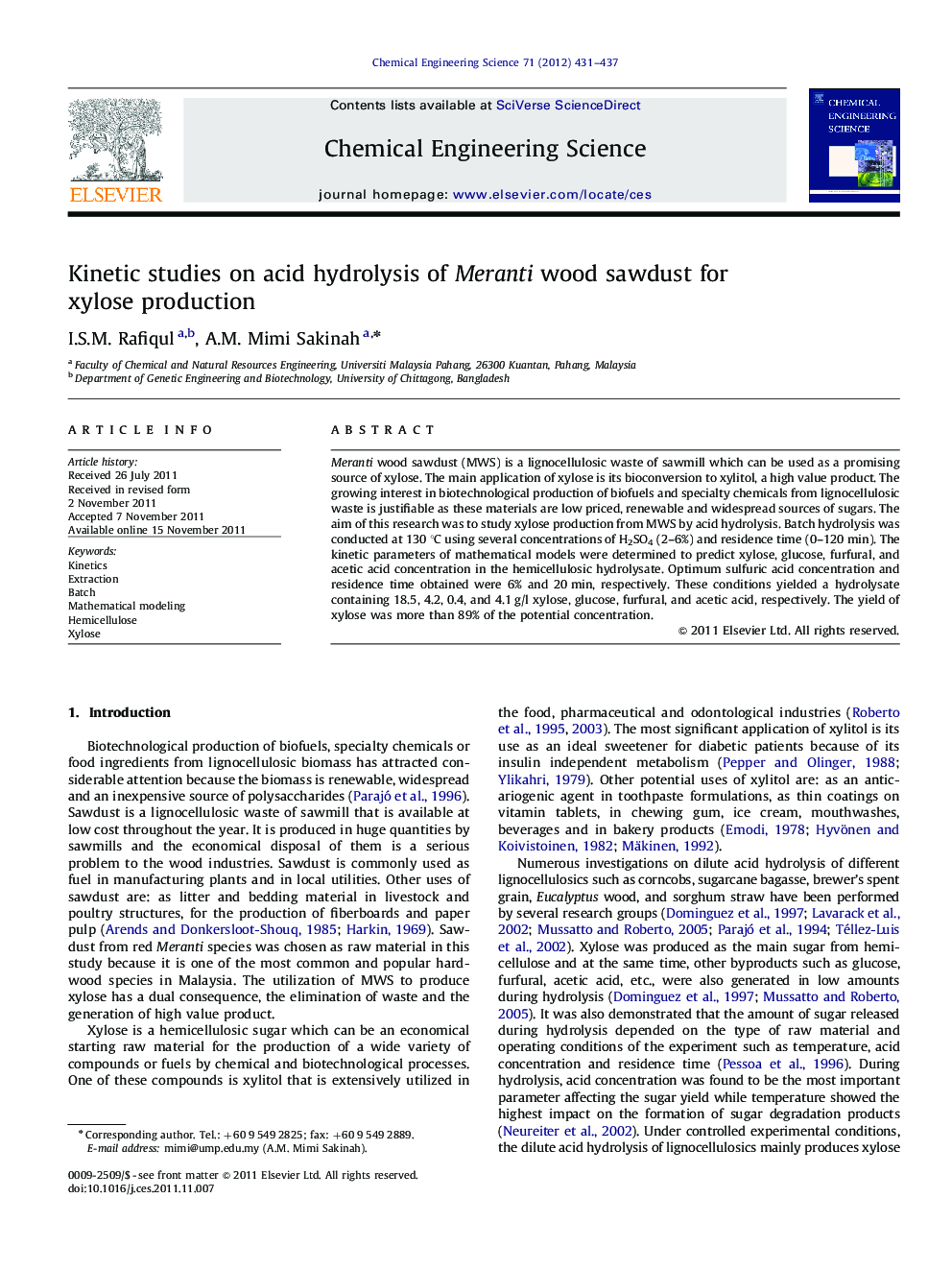| Article ID | Journal | Published Year | Pages | File Type |
|---|---|---|---|---|
| 155772 | Chemical Engineering Science | 2012 | 7 Pages |
Meranti wood sawdust (MWS) is a lignocellulosic waste of sawmill which can be used as a promising source of xylose. The main application of xylose is its bioconversion to xylitol, a high value product. The growing interest in biotechnological production of biofuels and specialty chemicals from lignocellulosic waste is justifiable as these materials are low priced, renewable and widespread sources of sugars. The aim of this research was to study xylose production from MWS by acid hydrolysis. Batch hydrolysis was conducted at 130 °C using several concentrations of H2SO4 (2–6%) and residence time (0–120 min). The kinetic parameters of mathematical models were determined to predict xylose, glucose, furfural, and acetic acid concentration in the hemicellulosic hydrolysate. Optimum sulfuric acid concentration and residence time obtained were 6% and 20 min, respectively. These conditions yielded a hydrolysate containing 18.5, 4.2, 0.4, and 4.1 g/l xylose, glucose, furfural, and acetic acid, respectively. The yield of xylose was more than 89% of the potential concentration.
► Meranti wood sawdust can be used as a potential source of xylose. ► Kinetic parameters were obtained to predict the concentration of products released. ► The yield of xylose was more than 89% of the potential concentration. ► Results are validated against experimental literature data.
